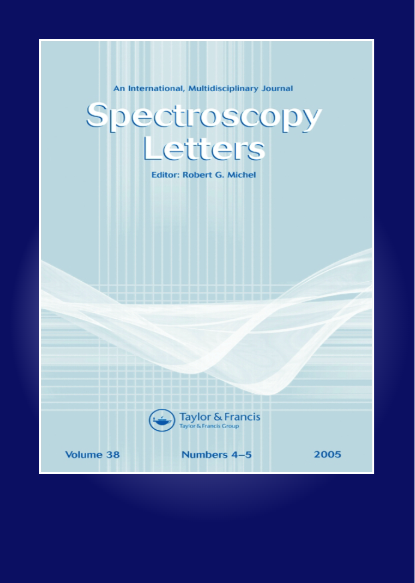抗癌剂n -苄基羰基丝氨酸的实验光谱和量子计算研究及分子对接分析
IF 1.6
4区 化学
Q3 SPECTROSCOPY
引用次数: 1
摘要
摘要本文通过量子化学计算和光谱分析揭示了N-苄氧羰基-l-丝氨酸的性质。利用密度泛函理论计算了优化后的几何结构和振动频率。从理论上得到了几何参数,并与实验数据进行了比较。标题化合物的计算振动波数显示出与记录的光谱完全一致。前沿分子轨道带隙能证实了标题化合物具有良好的反应性和分子稳定性。理论的紫外-可见光谱转化为在气体和不同溶剂中的分析。计算了核磁共振波谱。每项评估都与实验评估进行了比较。分子静电势能图是识别亲电和亲核位点的有效模型。此外,还额外计算了天然键轨道和穆利肯电荷分析。进行了药物相似性研究。结果表明,该标题化合物具有良好的生物活性。根据分子对接评估测试抗癌活性,并诊断标题化合物可以作为癌症的潜在抑制剂。本文章由计算机程序翻译,如有差异,请以英文原文为准。
Experimental spectroscopic and quantum computational investigation and molecular docking analysis of N-benzyloxycarbonyl-l-serine – an anticancer agent
Abstract This work presents the nature of N-benzyloxycarbonyl-l-serine through quantum chemical calculations and spectral analysis. The optimized geometry and vibrational frequencies were computed by density functional theory. The geometric parameters were theoretically obtained and those values were compared with experimental data. The calculated vibrational wavenumbers of the heading compound display exact agreement with the recorded spectrum. The frontier molecular orbital band gap energy confirmed that the heading compound has a good reactivity and stability of the molecule. The theoretical UV-Vis spectrum turned into analysis in gas and with different solvents. The nuclear magnetic resonance spectrum was calculated. Each evaluation was in comparison with the experimental ones. The molecular electrostatic potential energy map is an effective model to identify electrophilic and nucleophilic sites. Further, natural bond orbital and Mulliken charge analysis had been additionally calculated. Drug-likeness studies were carried out. This result shows that the heading compound has a good biological activity. Anticancer activity was tested based on the molecular docking evaluation and it was diagnosed that the heading compound can act as a potential inhibitor of liver cancer.
求助全文
通过发布文献求助,成功后即可免费获取论文全文。
去求助
来源期刊

Spectroscopy Letters
物理-光谱学
CiteScore
2.90
自引率
5.90%
发文量
50
审稿时长
1.3 months
期刊介绍:
Spectroscopy Letters provides vital coverage of all types of spectroscopy across all the disciplines where they are used—including novel work in fundamental spectroscopy, applications, diagnostics and instrumentation. The audience is intended to be all practicing spectroscopists across all scientific (and some engineering) disciplines, including: physics, chemistry, biology, instrumentation science, and pharmaceutical science.
 求助内容:
求助内容: 应助结果提醒方式:
应助结果提醒方式:


